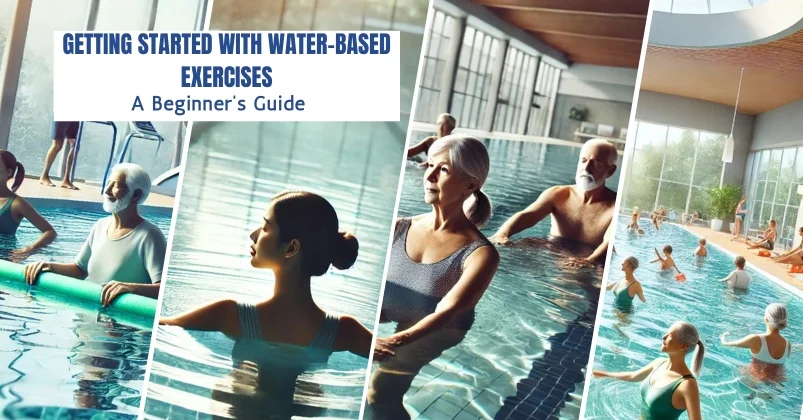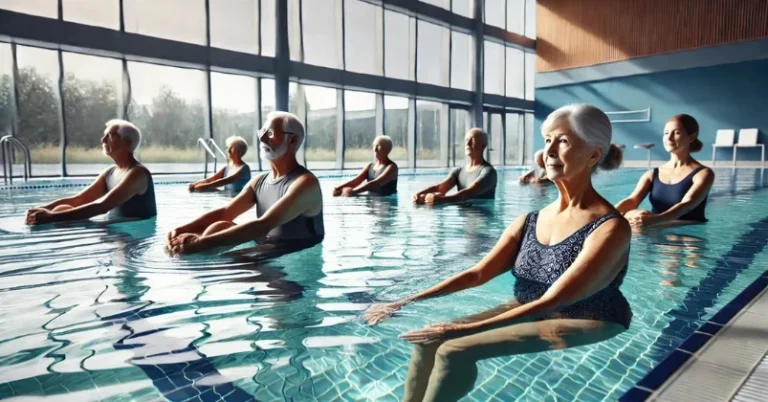Getting Started with Water-Based Exercises: A Beginner’s Guide
Water-based exercises are a fantastic way to stay fit and healthy, no matter your experience level. Whether you’re a seasoned athlete or just starting, there’s something in the water for everyone. One of the most popular and accessible options is simply walking. Walking in water offers a low-impact workout that gets your heart pumping and burns calories, all while being gentle on your joints.
Another great option is pool workouts. These can be easily adapted to your fitness level and can include a mix of exercises like water aerobics, interval training, and strength exercises. Pool workouts provide a full-body workout, allowing you to take advantage of the water’s natural buoyancy and resistance.
If you’re new to water-based exercise, starting with pool exercises is a great idea. You don’t need any special skills to begin jumping in and start with basics like walking or jogging in the pool. As you gain confidence, you can gradually challenge yourself with more advanced exercises. The water creates a supportive environment, making it easier to build your strength and stamina at your own pace.
Understanding Water-Based Exercises
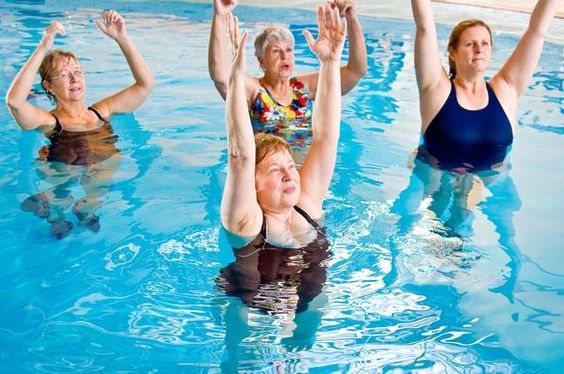
Water-based exercises are a great way to stay active and healthy, especially if you're looking for a low-impact option. The buoyancy of water reduces stress on your joints, making these exercises ideal for those dealing with joint pain or recovering from injuries or surgeries.
There are many types of water-based exercises to choose from, including water aerobics, aquatic exercises, water walking, and aqua fitness. These can be done in both shallow and deep water, with the intensity easily adjusted to match your fitness level.
Water aerobics is a popular choice, involving aerobic movements in the water that help boost cardiovascular fitness, muscle strength, and flexibility. Plus, it's a fun way to meet new people and socialize.
Aquatic exercises, like leg lifts, arm curls, and squats performed in the water, can enhance joint mobility, balance, and coordination. Water walking, which simply involves walking back and forth in a pool, is another low-impact exercise that can improve cardiovascular health and muscle strength.
Pool exercises such as lunges, squats, and push-ups are also effective for building strength. For those with arthritis, water exercises can help alleviate joint pain and stiffness, making it easier to stay active.
Aqua fitness is another dynamic option, offering exercises like jumping jacks, squats, and lunges, all performed in the water. This type of workout is great for improving both cardiovascular fitness and muscle strength.
In summary, water-based exercises are an excellent choice for people of all ages and fitness levels. They provide a fun, low-impact way to stay fit and reap numerous health benefits.
Benefits of Water-Based Exercises
Water-based exercises can significantly enhance your fitness level and boost your quality of life. They bring numerous benefits such as improving joint health, building muscle strength, enhancing cardiovascular fitness, and boosting flexibility and balance. Let’s take a closer look at these advantages.
Joint Health
For those with joint problems like osteoarthritis, rheumatoid arthritis, or conditions like osteoporosis and fibromyalgia, water exercises are ideal. The buoyancy of water lessens the stress on joints, offering a gentler workout. Exercising in water can help you move more freely, ease back pain, and promote healthier joints.
Muscle Strength
Exercising in water offers resistance, which is perfect for strengthening muscles. Water's resistance surpasses that of air, making it a potent form of strength training. Activities like water aerobics engage your upper body, lower body, and core muscles. They also provide a refreshing way to tone your biceps and hamstrings.
Cardiovascular Fitness
Water exercises are a fantastic way to boost your heart health. Swimming delivers a full-body workout that targets muscles while providing cardiovascular benefits. Water aerobics also offers an invigorating and enjoyable cardio session.
For Flexibility and Balance
Water-based exercises are excellent for improving your flexibility and balance. The resistance of the water provides a natural form of resistance training that can help improve your range of motion and balance. By performing exercises such as water aerobics, you can improve your overall flexibility and balance.
In summary, water-based exercises offer many health benefits, including joint health, muscle strength, cardio fitness, flexibility, and balance. By incorporating water-based exercises into your fitness routine, you can burn calories, build muscle, and improve your overall wellness.
Getting Started with Water-Based Exercises
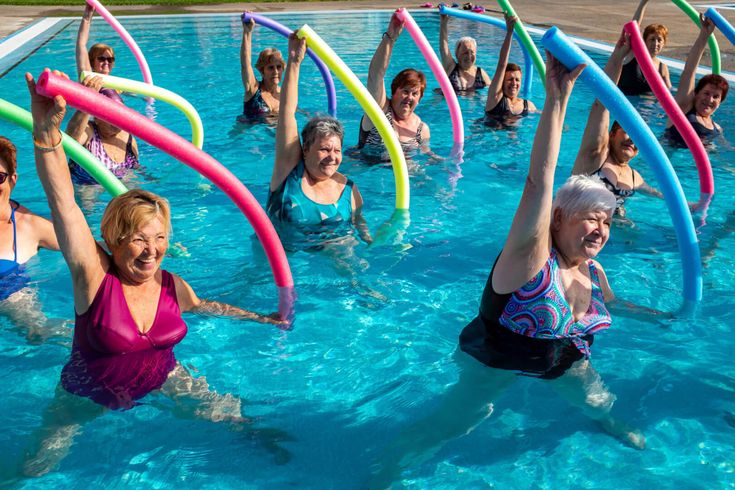
Water-based exercises are a great way to stay active and improve your overall fitness. They are low-impact, making them ideal for people of all ages and fitness levels, including those with joint pain or arthritis. If you're new to water-based exercises, here are some tips to help you get started.
Choosing the Right Equipment
Before you start your water-based exercise routine, it's important to choose the right equipment. Some of the most common equipment used in water-based exercises include flotation belts, resistance gloves, paddles, kickboards, and ankle weights. You can also use foam dumbbells or noodles to help you stay afloat in the water.
Preparing for Your First Class
If you're planning to attend a water-based exercise class at a gym or local pool, it's important to prepare ahead of time. Make sure you have the right equipment and clothing, such as a swimsuit, water shoes, and a towel. You should also warm up before your class by doing some stretches or walking in the water.
Understanding Different Types of Exercises
There are many different types of water-based exercises you can do, including pool walking, jumping jacks, lunges, and squat jumps. You can also use a flotation belt to tread water or resistance gloves to do arm curls. Aqua fitness classes may include low-impact aerobic exercises, such as water walking or jogging, as well as interval training and strength training exercises.
When starting, it's important to choose exercises that are appropriate for your fitness level and any physical limitations you may have. If you have joint pain or arthritis, you may want to start with shallow water exercises before progressing to deep water exercises. Always listen to your body and don't push yourself too hard.
Overall, water-based exercises are a great way to stay active and improve your fitness. With the right equipment, preparation, and understanding of different types of exercises, you can get started with water-based exercises and enjoy the many benefits they offer.
Special Considerations for Water-Based Exercises
Water-based exercises are a great way to improve your overall health and fitness, but some people need to take special precautions when engaging in these activities. Here are some things to keep in mind if you fall into one of these categories:
For Pregnant Women
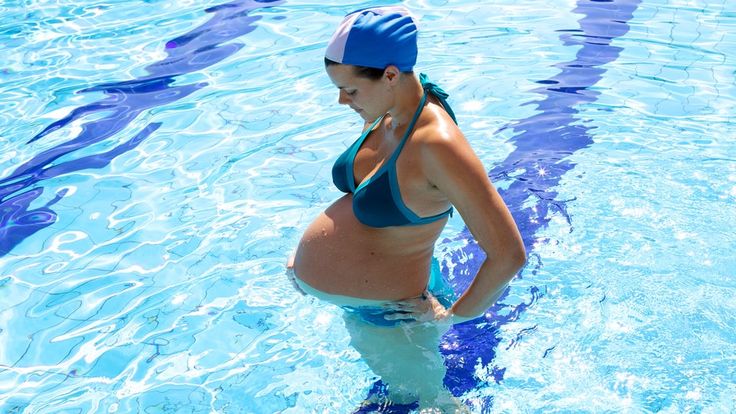
Water-based exercises can be an excellent way for pregnant women to stay active and healthy. Not only can it help reduce stress and improve mood, but it can also improve circulation and reduce swelling. However, it's important to talk to your doctor before starting any new exercise program, especially if you're pregnant. Some water-based exercises may not be safe for women who are in their third trimester or who have certain medical conditions.
For People with HIV
Water-based exercises can be a safe and effective way for people with HIV to stay active and improve their overall health. However, it's important to talk to your doctor before starting any new exercise program, especially if you have a weakened immune system. You may need to take extra precautions to avoid infections, such as avoiding public pools or hot tubs.
For People with Arthritis
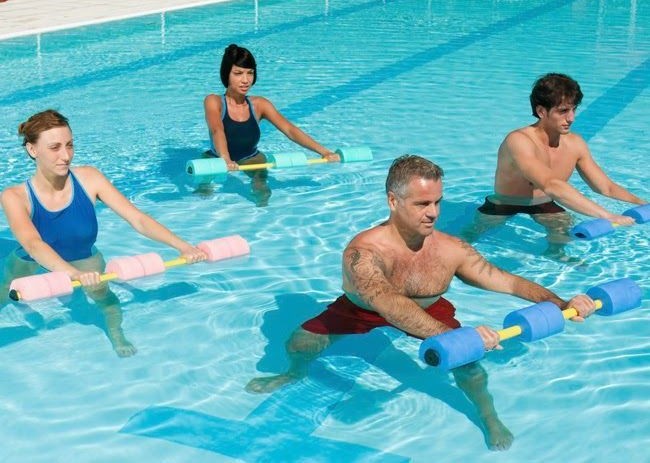
Water-based exercises can be an excellent way for people with arthritis to stay active and reduce joint pain. The buoyancy of the water can help reduce the impact on your joints, making it easier to move without pain. However, it's important to talk to your doctor before starting any new exercise program, especially if you have osteoarthritis or rheumatoid arthritis. You may need to modify your exercise routine to avoid exacerbating your symptoms.
For People with Back Pain
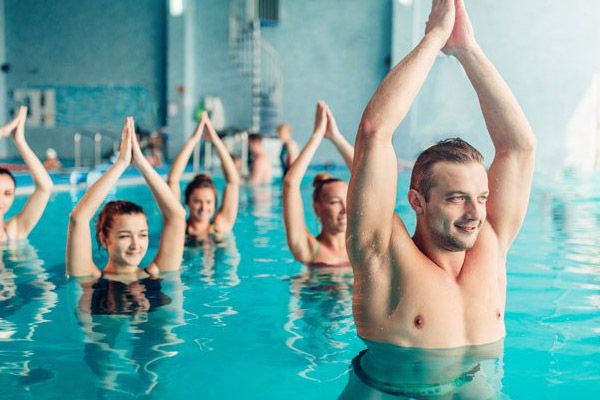
Water-based exercises can be a great way for people with back pain to stay active and improve their overall health. The buoyancy of the water can help reduce the impact on your spine, making it easier to move without pain. However, it's important to talk to your doctor before starting any new exercise program, especially if you have a history of back pain or injury. You may need to modify your exercise routine to avoid exacerbating your symptoms.
Overall, water-based exercises are a safe and effective way to improve your overall health and fitness. However, it's important to talk to your doctor before starting any new exercise program, especially if you have any medical conditions or concerns. With the right precautions and modifications, water-based exercises can be a great way to stay active and healthy.
Conclusion
Water-based exercises offer a fantastic way to boost your overall fitness and enhance your quality of life. The benefits are plentiful, from improved cardiovascular health and increased muscular strength to enhanced joint mobility. Because these exercises are low-impact, they’re particularly gentle on the joints, making them an ideal choice for those with arthritis or other joint-related issues.
Beyond the physical benefits, water-based exercises can be a fun and social way to stay active. You can do them in various settings, like community pools, fitness centers, or even your backyard pool. With so many options, it’s easy to find a routine that suits your needs and preferences.
If you’re new to water-based exercises, it’s wise to start slowly, gradually increasing the intensity and duration of your workouts as you become more comfortable. It’s also a good idea to check in with your healthcare provider before beginning any new exercise program, especially if you have any pre-existing health conditions.
In summary, water-based exercises are a safe, effective, and enjoyable way to improve your fitness and well-being. Whether your goal is to enhance cardiovascular health, build strength, or simply enjoy a low-impact workout, water-based exercises are a great option to explore.
FAQs
Water exercises are a great way to burn calories and lose weight. Some effective pool exercises for weight loss include swimming laps, water aerobics, water jogging, and treading water. These exercises can help you burn calories, build muscle, and improve your cardiovascular health.
If you're new to water-based exercises, it's important to start slowly and gradually increase the intensity of your workouts. Some beginner-friendly pool workouts include water walking, water jogging, and simple water aerobics routines. These exercises are low-impact and easy on the joints, making them a great option for people who are just starting.
You don't need any special equipment to get a great workout in the pool. Some pool exercises that don't require equipment include water jogging, water walking, and simple water aerobics routines. You can also use the natural resistance of the water to strengthen your muscles by performing exercises like leg lifts and arm circles.
There are many free water aerobics exercise routines available online. You can find them on websites like YouTube and Pinterest, or by searching for “free water aerobics routines” in your favorite search engine. Many community centers and gyms also offer free water aerobics classes, so be sure to check with your local fitness centers.
Water exercises are a great option for seniors because they are low-impact and easy on the joints. Some water exercises that are safe for seniors include water walking, water aerobics, and swimming laps. These exercises can help seniors improve their cardiovascular health, build muscle, and improve their overall fitness.
The frequency of your water aerobics classes will depend on your fitness goals and schedule. For maximum benefit, it's recommended that you attend water aerobics classes at least two to three times per week. This will help you build muscle, burn calories, and improve your cardiovascular health.

